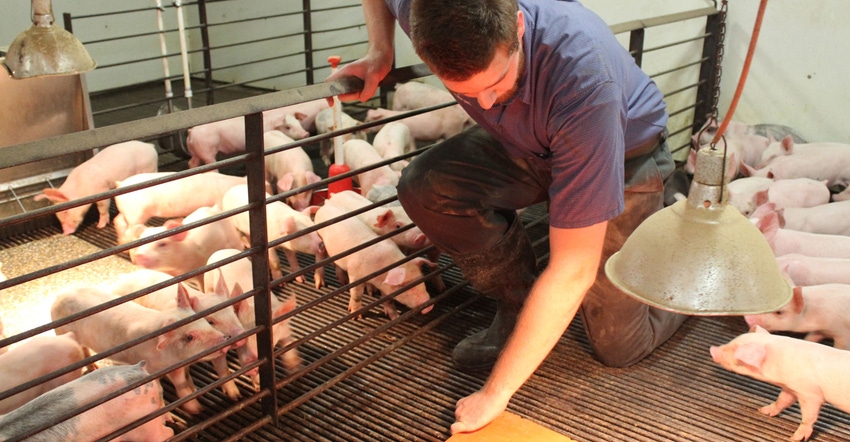
Hallmark is really missing out by not offering cards for Pork Month. I mean, who doesn’t want to share their love of pork by sending someone a card to show them just how much you care — about them and, of course, about pork?
But since Hallmark dropped the ball on bacon greetings, I’ll do my best to get you in the mood for Porktober. October has been designated as Pork Month, but Porktober has a much better ring to it.
Here are some numbers from the Pork Checkoff for you to digest while chewing on some bacon or a chop:
67,000. There are more than 67,000 hog farms in the U.S., and those support more than 610,000 jobs. Those farms and those jobs have no small task — helping produce the safest, most nutritious and delicious pork for consumers. That brings us to …
28 billion. Yes, that’s right; 28 billion pounds of pork is produced in the U.S. each year, from 131 million pigs marketed by American pig farmers. That is a lot of pork, and American consumers are up to the task by dining on almost 50 pounds per person. But we need someone to produce it, so …
29.4. U.S. pig farmers are very good at what they do, so much so that we cannot rely on the domestic market to eat up the supply. For 2021, 29.4% of U.S. pork production found its way into export channels, with Mexico, China and Hong Kong, Japan, Canada, South Korea, Colombia, and the Philippines being the top markets. Pork is loved here, but it’s loved even more overseas, like to the tune of …
238.4 billion. The world can’t get enough pork, as it is the most widely consumed animal protein on the planet, coming in at 238.4 billion pounds, outdistancing chicken at 214.5 billion pounds and beef at 123.1 billion pounds. As you see, keeping safe, nutritious pork landing on dinner plates around the world is a big job. U.S. hog producers are up to it, even though they are being asked to do more with less, being sustainable and efficient. That brings us to …
5. The rural landscape has changed over the decades, as fewer and fewer people have dedicated their lives to helping feed the world. Technological advancements have helped producers to do so in an efficient manner. As an example, in 1959, it took eight pigs to produce 1,000 pounds of pork. Today, it takes only five. In addition to using fewer hogs to produce more pork, producers have also become more efficient in the use of the globe’s resources to produce each pound of pork — using 75.9% less land, 25.1% less water, 7% less energy with 7.7% lower carbon emissions compared to 50 years ago.
Feeding the world is a big task, but U.S. producers are up to it. Pat yourself on the back for a job well done. And, if you aren’t a hog producer, why don’t you send a producer a card of thanks to show your appreciation, and buy more pork?
Schulz, a Farm Progress senior staff writer, grew up on the family hog farm in southern Minnesota, before a career in ag journalism, including National Hog Farmer.
About the Author(s)
You May Also Like






